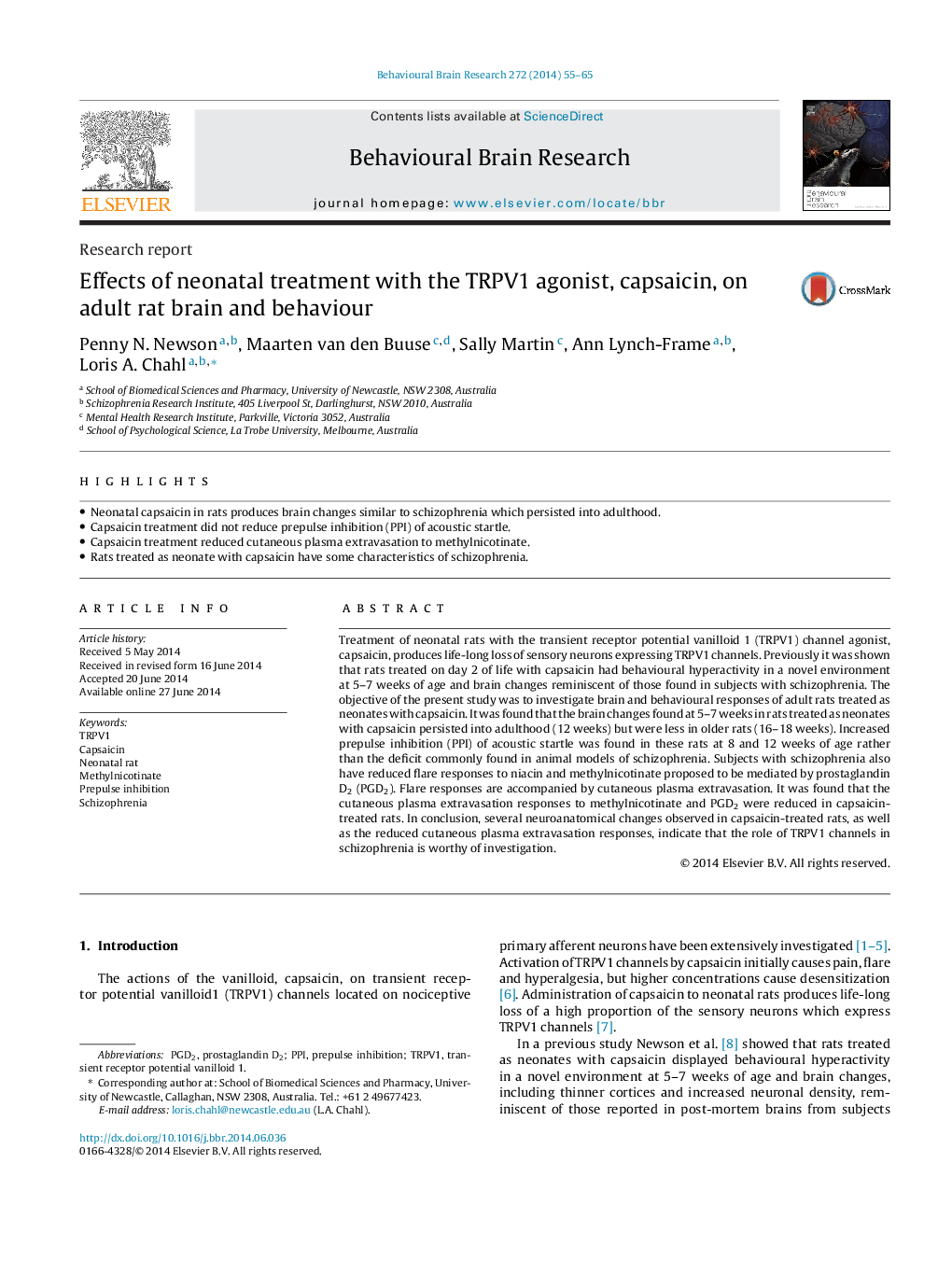| Article ID | Journal | Published Year | Pages | File Type |
|---|---|---|---|---|
| 6257471 | Behavioural Brain Research | 2014 | 11 Pages |
â¢Neonatal capsaicin in rats produces brain changes similar to schizophrenia which persisted into adulthood.â¢Capsaicin treatment did not reduce prepulse inhibition (PPI) of acoustic startle.â¢Capsaicin treatment reduced cutaneous plasma extravasation to methylnicotinate.â¢Rats treated as neonate with capsaicin have some characteristics of schizophrenia.
Treatment of neonatal rats with the transient receptor potential vanilloid 1 (TRPV1) channel agonist, capsaicin, produces life-long loss of sensory neurons expressing TRPV1 channels. Previously it was shown that rats treated on day 2 of life with capsaicin had behavioural hyperactivity in a novel environment at 5-7 weeks of age and brain changes reminiscent of those found in subjects with schizophrenia. The objective of the present study was to investigate brain and behavioural responses of adult rats treated as neonates with capsaicin. It was found that the brain changes found at 5-7 weeks in rats treated as neonates with capsaicin persisted into adulthood (12 weeks) but were less in older rats (16-18 weeks). Increased prepulse inhibition (PPI) of acoustic startle was found in these rats at 8 and 12 weeks of age rather than the deficit commonly found in animal models of schizophrenia. Subjects with schizophrenia also have reduced flare responses to niacin and methylnicotinate proposed to be mediated by prostaglandin D2 (PGD2). Flare responses are accompanied by cutaneous plasma extravasation. It was found that the cutaneous plasma extravasation responses to methylnicotinate and PGD2 were reduced in capsaicin-treated rats. In conclusion, several neuroanatomical changes observed in capsaicin-treated rats, as well as the reduced cutaneous plasma extravasation responses, indicate that the role of TRPV1 channels in schizophrenia is worthy of investigation.
